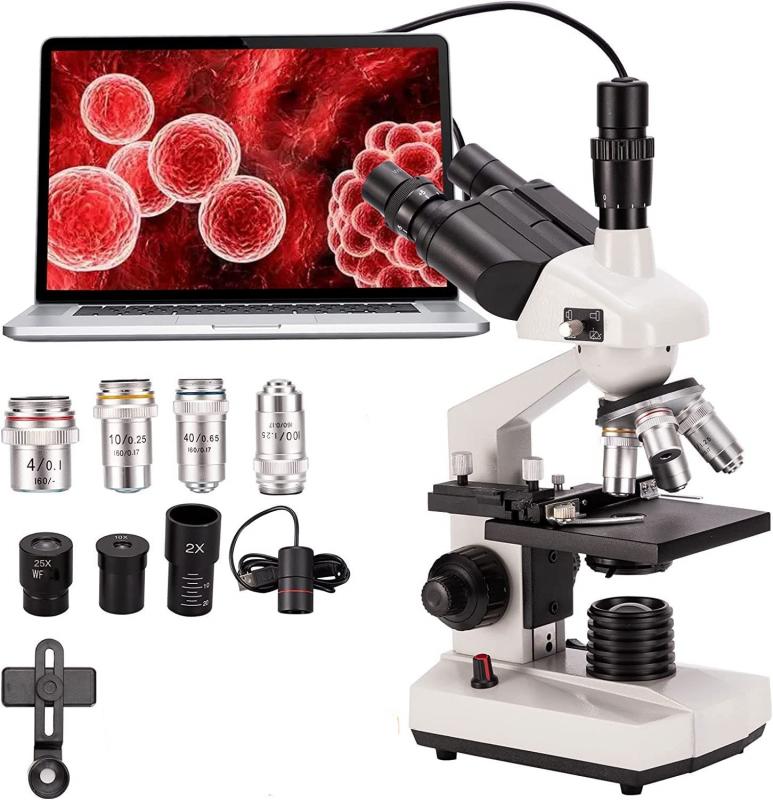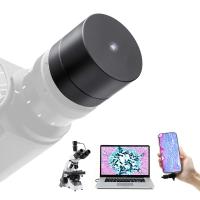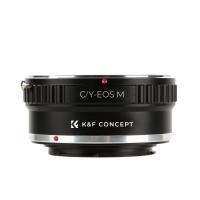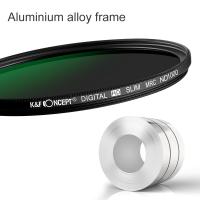Microscope When Was It Invented ?
The microscope was invented in the late 16th century, with the credit for its invention often given to Dutch spectacle maker Zacharias Janssen and his father Hans. However, there is some debate over the exact origins of the microscope, as there were other inventors around the same time who were also experimenting with lenses and magnification. Regardless of its exact origins, the microscope quickly became an important tool for scientists and researchers, allowing them to observe and study the microscopic world in ways that were previously impossible. Over the centuries, microscopes have continued to evolve and improve, with modern microscopes now capable of magnifying objects up to a million times or more. Today, microscopes are used in a wide range of fields, from biology and medicine to materials science and engineering.
1、 Invention of the microscope (late 16th century)
The invention of the microscope is attributed to two Dutch spectacle makers, Zacharias Janssen and his father Hans Janssen, in the late 16th century. They discovered that by placing two lenses in a tube, objects could be magnified. This early version of the microscope was called the "simple microscope" and had limited magnification capabilities.
In the early 17th century, another Dutch scientist, Antonie van Leeuwenhoek, improved upon the design of the microscope and was able to achieve much higher magnification. He used his microscope to observe and document microorganisms, which led to the discovery of bacteria and other microscopic life forms.
Since then, the microscope has undergone numerous advancements and improvements, including the development of the compound microscope, which uses multiple lenses to achieve even higher magnification. Today, microscopes are used in a wide range of fields, from biology and medicine to materials science and engineering.
Recent advancements in technology have also led to the development of new types of microscopes, such as the scanning electron microscope and the atomic force microscope, which allow for even greater magnification and resolution.
Overall, the invention of the microscope has had a profound impact on our understanding of the world around us, and continues to be an essential tool in scientific research and discovery.
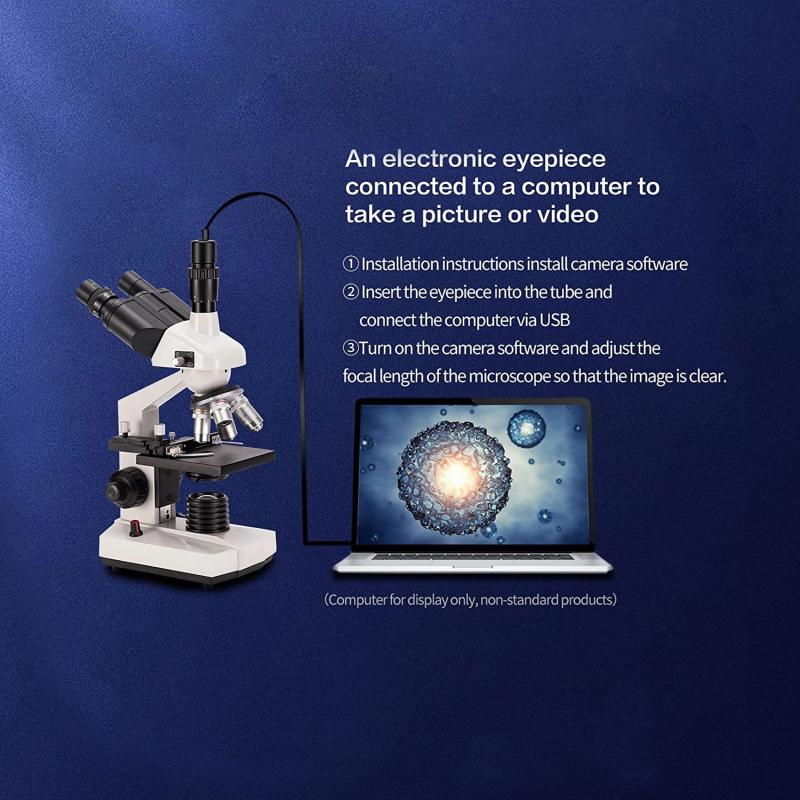
2、 Development of compound microscopes (17th century)
The microscope is an essential tool in the field of science, allowing us to observe and study objects that are too small to be seen with the naked eye. The development of the compound microscope, which uses two or more lenses to magnify an object, is credited to the 17th century. The first compound microscope was invented by Dutch scientist Antonie van Leeuwenhoek in the 1670s. He used it to observe and study microorganisms, which he called "animalcules."
Since then, the microscope has undergone many advancements and improvements. In the 19th century, the development of the electron microscope allowed scientists to observe even smaller objects, such as atoms and molecules. In recent years, advancements in technology have led to the development of new types of microscopes, such as the scanning tunneling microscope and the atomic force microscope, which allow for even greater magnification and resolution.
Despite the many advancements in microscope technology, the basic principles of magnification and resolution remain the same. The microscope continues to be an essential tool in many fields of science, including biology, chemistry, and materials science. It has allowed us to make countless discoveries and advancements, and will undoubtedly continue to do so in the future.
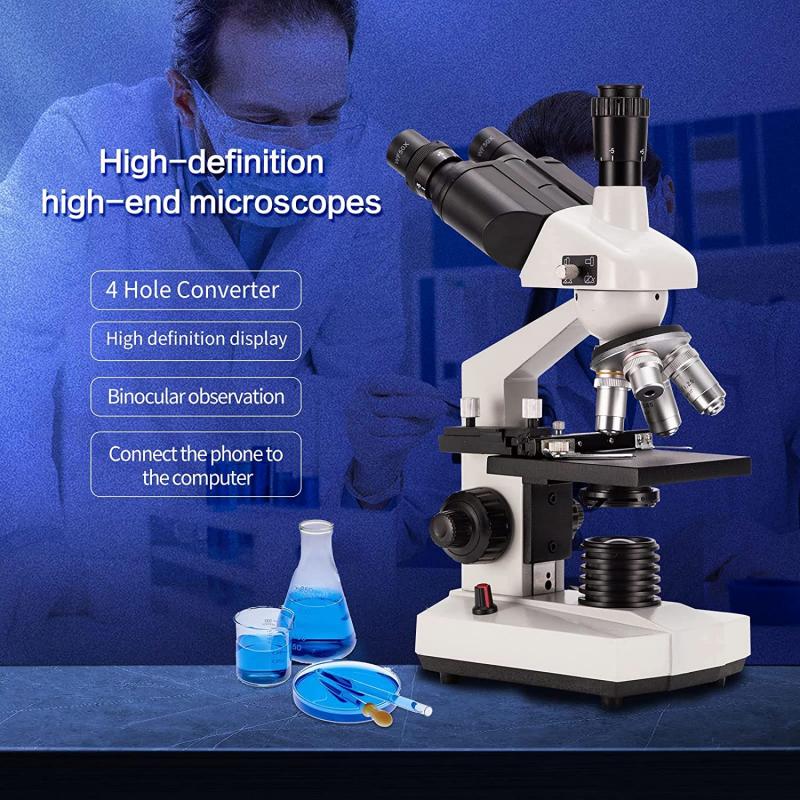
3、 Advancements in lens technology (18th century)
The microscope is an essential tool in the field of science, allowing us to observe and study objects that are too small to be seen with the naked eye. The invention of the microscope is often attributed to the Dutch scientist Antonie van Leeuwenhoek in the 17th century. However, the first microscopes were simple magnifying glasses, and it was not until the 18th century that advancements in lens technology allowed for the development of more powerful microscopes.
In the 18th century, scientists such as Joseph Jackson Lister and Ernst Abbe made significant contributions to the development of microscope lenses. Lister introduced the achromatic lens, which corrected for chromatic aberration, while Abbe developed the concept of numerical aperture, which allowed for higher resolution and magnification.
Since then, the microscope has continued to evolve, with the development of electron microscopes and other advanced imaging techniques. These advancements have allowed scientists to study the structure and function of cells, microorganisms, and other tiny structures in unprecedented detail.
In recent years, there has been a growing interest in the use of microscopes in fields such as nanotechnology and materials science. Researchers are using microscopes to study the properties of materials at the atomic and molecular level, which could lead to the development of new materials with unique properties and applications.
Overall, the invention of the microscope and subsequent advancements in lens technology have revolutionized the field of science and allowed us to explore the microscopic world in ways that were once unimaginable.

4、 Introduction of electron microscopes (20th century)
The microscope has a long and fascinating history, dating back to the 16th century when the first compound microscope was invented. However, it wasn't until the 20th century that the introduction of electron microscopes revolutionized the field of microscopy.
The first electron microscope was invented in 1931 by German physicist Ernst Ruska and his colleague Max Knoll. This new type of microscope used a beam of electrons instead of light to magnify objects, allowing for much higher magnification and resolution than traditional microscopes. This breakthrough technology paved the way for new discoveries in fields such as biology, chemistry, and materials science.
Since then, electron microscopes have continued to evolve and improve, with the latest models capable of producing images with atomic-level resolution. These advanced microscopes have enabled scientists to study the structure and behavior of materials and biological specimens in unprecedented detail, leading to new insights and discoveries.
In recent years, there has also been a growing interest in developing portable and affordable microscopes that can be used in resource-limited settings, such as in developing countries or remote areas. These new technologies have the potential to democratize access to microscopy and empower more people to explore the microscopic world around them.
Overall, the invention and evolution of the microscope, particularly the electron microscope, have had a profound impact on science and technology, and continue to drive new discoveries and innovations today.
